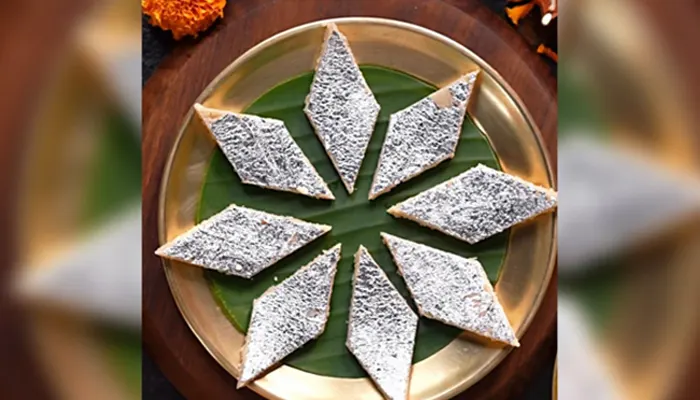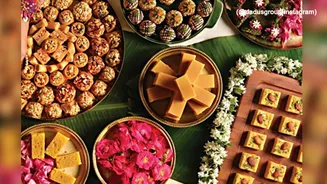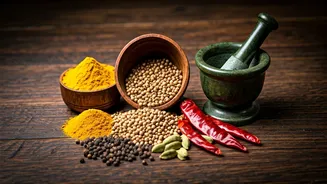Diwali’s Mithai Mayhem : Sweet nostalgia, surprises, and the kind of sugar rush that could make even the gloomiest Diwali night sparkle - this is the real
soul of India’s festival.
Somewhere between the third rocket whistling past your ear and the neighbor’s child setting off a chorus of “Happy Diwali!” at the crack of dawn, you catch a whiff - cardamom, ghee, something faintly floral. No, it’s not the air freshener. It’s mithai. Loads of it. Diwali brings with it a parade of boxes - some wrapped with gold lace, others stacked haphazardly on kitchen counters.
But here’s the eternal flavor question: What makes these sweets, these little sugary wonders, the heart of Diwali celebrations for, well, forever?
Kaju Katli: Diamonds on a Platter

(@stylishachari/Instagram)
First things first, kaju katli. You might think of it as that neutral “safe” sweet to gift (and sneakily hoard for midnight cravings), but did you know it’s said to have roots in the royal kitchens of Mughal India? Even the shape - a polished diamond - seems designed for drama. Chew on one and there’s this little pop, a delicate sweetness that stands firm without tipping over into syrupy excess. Some families now sneak in jaggery or give it a hit of salt. But the classics are always in fashion.
(@sanjana.feasts/Instagram)
Gulab Jamun: Spherical Bliss, Syrup Drips
(@bbcfoods, sanjana.feasts/Instagram)
You know gulab jamuns. Everyone does. Those deep-fried khoya dumplings, lazy and lush in warm syrup, showing up at every single gathering. Sometimes, they collapse on your plate, sometimes they hold shape like a new year’s resolution gone right. Opinions run strong - should they be piping hot, room temp, or chilled.
Gujiya and Friends: Sweet Pockets, Sweet Memories
(@kabitaskitchen/Instagram)
If you’ve ever peeled back a crispy gujiya shell and found that mile-high mountain of khoya, coconut, dried fruits - all that rich stuff - then you know what home tastes like. Baked, fried, even air-fried, gujiyas too have their regional quirks: In UP, you’ll find them blushing with rose or cardamom, while in Rajasthan, they go nut-heavy. There’s a certain nostalgia tucked into each bite, even if you can’t put your finger on whether it was dadi, bua, or someone else who made them best.
Mysore Pak: Pure, Decadent South
(@masterchefmom/Instagram)
Careful with this one. A tiny piece and you’re wading knee-deep in ghee and gram flour, courtesy the grand kitchens of Mysore. It was legendary chef Kakasura Madappa’s last-minute kitchen invention, and if that name doesn’t make you smile, just wait till the sweet hits your tongue: sandy, then instantly melting, like memories from a half-remembered childhood Diwali.
More Than Sweets - Tradition Poured Into Every Bite
Surely loving a little remix and experimentation!
(@cook.withsingh/Instagram)
Let’s pause - every sweet isn’t just sugar and nuts. There’s history, rivalry (Odisha vs. Bengal for rasgulla? Don’t even start), stories whispered over rolling pins and forgotten scraps of parchment. In 2025, you’ll even see millet-based laddoos and chocolate-anar barfis, because Indians can never resist a little remix. Yet, each box, whether glistening from Haldiram’s or a neighbourhood halwai, radiates that essential Diwali warmth.
And isn’t that the real treat - the chaotic, crumb-strewn magic of it all? Lights outside, sweets inside, laughter everywhere. Honestly, without mithai, what’s left of Diwali but a pile of burnt sparklers and one tired moon?
Go on, have just one more piece. Or four. Diwali comes just once a year. Happy Diwali



